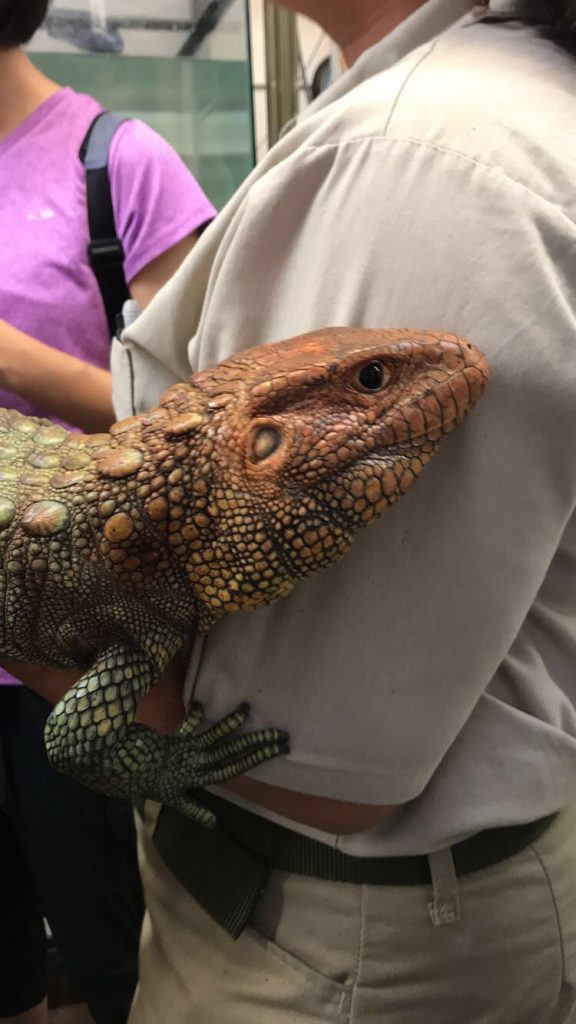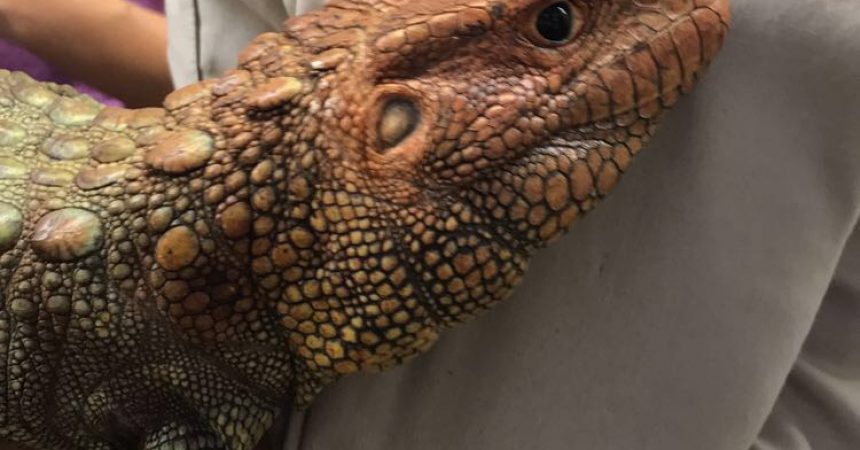Zoo InternQuest is a seven-week career exploration program for San Diego County high school juniors and seniors. Students have the unique opportunity to meet professionals working for the San Diego Zoo, Safari Park, and Institute for Conservation Research, learn about their jobs, and then blog about their experience online. Follow their adventures here on the Zoo’s website!
 When people think of the cute and cuddly creatures of the world, reptiles often do not come to mind. However, Senior Reptile Keeper, Rachael Walton is here to tell a different story. Ms. Walton works in the San Diego Zoo’s Reptile Department, caring for turtles, snakes, lizards, other reptiles and various amphibians. Ms. Walton has loved reptiles all her life– so much so, that in high school, she would carry her pet ball python, Hercules, in the front pocket of her overalls. Although, Ms. Walton no longer carries pythons in her pockets, she continues to care for reptiles of all shapes and sizes through her dream job as a Reptile Keeper.
When people think of the cute and cuddly creatures of the world, reptiles often do not come to mind. However, Senior Reptile Keeper, Rachael Walton is here to tell a different story. Ms. Walton works in the San Diego Zoo’s Reptile Department, caring for turtles, snakes, lizards, other reptiles and various amphibians. Ms. Walton has loved reptiles all her life– so much so, that in high school, she would carry her pet ball python, Hercules, in the front pocket of her overalls. Although, Ms. Walton no longer carries pythons in her pockets, she continues to care for reptiles of all shapes and sizes through her dream job as a Reptile Keeper.
As a Senior Reptile Keeper, Ms. Walton cares for many of the animals in the Reptile Department. The Reptile Department at the Zoo is broken into two sections, the Reptile House and the Reptile Walk. The Reptile Walk is home to many native species from California, Arizona, and Colorado. Additionally, the Reptile Walk includes species of amphibians, such as frogs and toads, Chinese alligators, monitors, and iguanas. The Reptile Walk, unlike the Reptile House, holds only non-venomous animals. The Reptile House is home to both venomous and non-venomous reptiles and amphibians from around the world.
As we continued on our tour, we met a very special caiman lizard named Martin. Caiman lizards are large lizards that resemble caimans, which are members of the crocodilian family. Crocodilians are distinguished by distinct scales for protection, long mouths, short legs, and strong tails. Similar to crocodiles, caiman lizards use their strong tails for swimming, but unlike crocodiles, they also use it for balance in the trees. Although caiman lizards are not well studied in the wild, and are likely to not be endangered, Martin still makes a great addition to the Reptile House. Martin is one of Ms. Walton’s favorite reptiles in the tropical corridor because he is one of the few reptiles that is tractable and mild mannered. This makes him perfect to go on field trips for presentations and community outreach because when people see reptiles like Martin that are not threatening, and do not seem dangerous, they are more likely to want to learn about reptiles. This opens a door for people to become interested in reptiles and reptile conservation.
Animal ambassadors, like Martin, are crucial to the execution of the San Diego Zoo’s mission of ending extinction. The San Diego Zoo concentrates on small steps to make big changes. According to Ms. Walton, part of this is using their resources where they are most needed. For example, instead of using funds to conduct research on the caiman lizard, those funds might better be used to help different conservation projects such as the bush master project and the Burmese star tortoise Species Survival Plan.
Ms. Walton works directly with the Burmese star tortoise reproduction program. Ms. Walton and her colleagues have successfully cared for three clutches of tortoises ranging in age from one month to one year. The Burmese star tortoise reproduction project is important because they are a critically endangered species due to habitat destruction from humans. The Zoo hopes to continue to cultivate a healthy population of these tortoises to be used in other breeding programs at the San Diego Zoo and other institutions.
In addition to the Burmese star tortoise reproduction program, the Zoo is also working to conserve radiated tortoises in the wild. These tortoises are native to Madagascar and can be identified by their radiated star patterned shells. These tortoises are endangered due to climate change and the illegal pet trade. This past May, the Zoo worked with Turtle Survival Alliance (TSA) in Madagascar to help tortoises that were captured and held in an abandoned mansion for the illegal pet trade or to be sold into the food industry. The Zoo and TSA, in partnership with local government and conservation agencies, helped build sanctuaries in the tortoises natural habitat to protect them from further disturbances and exploitation.
Ms. Walton and her devoted coworkers continue to work to help end extinction but they cannot do it alone. It is important that people become educated about what is happening in the world and what is happening to the wildlife near and far from home. There are many ways for people to connect to the beautiful creatures of the reptile kingdom. Whether people visit the Reptile Room and the Reptile Walk at the Zoo or go visit the Turtle Conservancy in Ojai, California, it is important for people like you to go see these beautiful endangered creatures before they are gone.
Casey, Real World Team
Week Three, Fall Session 2018


